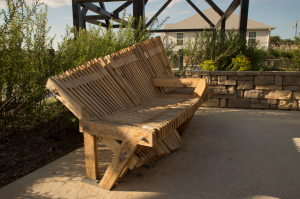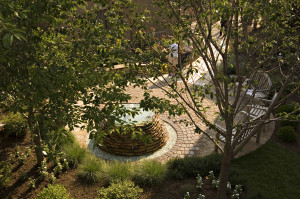Each month in our Open Voices blog we share insight from leaders in our communities who are advancing what it means to have sacred, open green spaces in our cities. In April, we talk with several companies and initiatives developing meaningful places in our cities.
“Placemaking is a quiet movement that reimagines public spaces as the heart of every community, in every city. It’s a transformative approach that inspires people to create and improve their public spaces.”- Project for Public Spaces
Spaces designed and constructed based on the Nature Sacred Principle, presented here throughout our website, support everyday intimate and meaningful civic sacred experiences. Nature Sacred placemaking provides opportunity for a deeper human experience within carefully crafted public green spaces that offer temporary sanctuary, encourage reflection, provide solace, and engender peace and well-being.
The experience of everyday, civic sacred may emerge in found spaces that are community-managed, sometimes reappropriated from their prior use, and often carved out of public lands. They may be dispersed throughout the city in everyday and highly public landscapes such as traffic islands, sidewalk edges, waterfronts, or at the base of large trees. The relationship between nature and meaningful experiences may be expressed as a nature-based activity (such as a tree planting), or as objects brought to a memorial or ceremony (such as flowers). Civic sacred locations can include a subspace within public green space (such as existing parks or gardens), at sites of historic or local significance (such as city halls or schools), or at key places in daily life (places where people work, shop or drive), within large spaces, or occupying tiny scraps of space.

Once established, a sacred space can continue to serve its creators as a local gathering place, or as a place of intentional community visible during daily routines. People may continue to engage with a place by gathering to view the location of a tragic event or its aftermath, provide decoration during key holidays or dates, provide ongoing care and renewal of plants or other materials, make use of ways to leave thoughts or words (mailbox, journal, prayer flags, ribbons), and participate in periodic ceremonies (such as an annual remembrance event).

Such spaces are supported by the Nature Sacred program, sponsored by the TKF Foundation. The foundation has contributed to the creation of more than 130 Open Spaces Sacred Places in the mid-Atlantic region of the U.S. over the past twenty years. These spaces and gardens have been placed at schools, hospitals, places of worship, prisons, and within neighborhoods. They have been designed and constructed based on the Nature Sacred Principle. Every site has been created with community partners, often coordinated by a local liaison, the ‘firesoul’ of the project. Every sacred place includes a bench, providing a comfortable place to sit and reflect, including the opportunity to write an entry in a journal.
Where are your civic sacred places?
